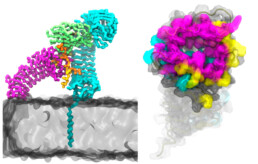The Modes of action

A. Inflammation reduction
TCP-25 binds specifically to and neutralizes lipopolysaccharide (LPS) and related microbial products (such as LTA, peptidoglycan, lipid A), resulting primarily in reduction of the strong inflammatory effect caused by LPS and other toxins.
Upon microbial interaction, TCP-25 forms a C-shaped structure which blocks the LPS-binding site of CD14, preventing dimerization of toll-like receptors (TLR) and inflammatory signalling. This leads to regulation of excessive levels of TNF, IL-8 and particularly IL-1ß in contaminated/infected wounds, thus promoting normal healing.
B. Infection prevention
TCP-25 has a direct bactericidal effect caused by electrostatically binding to the bacterial cell wall and inducing lysis and bacterial death.
Furthermore, since TCP-25 does not interfere with bacterial phagocytosis, it’s usage leads to retained phagocytic clearance and reduced bacteria-induced inflammation.
Read more about:
